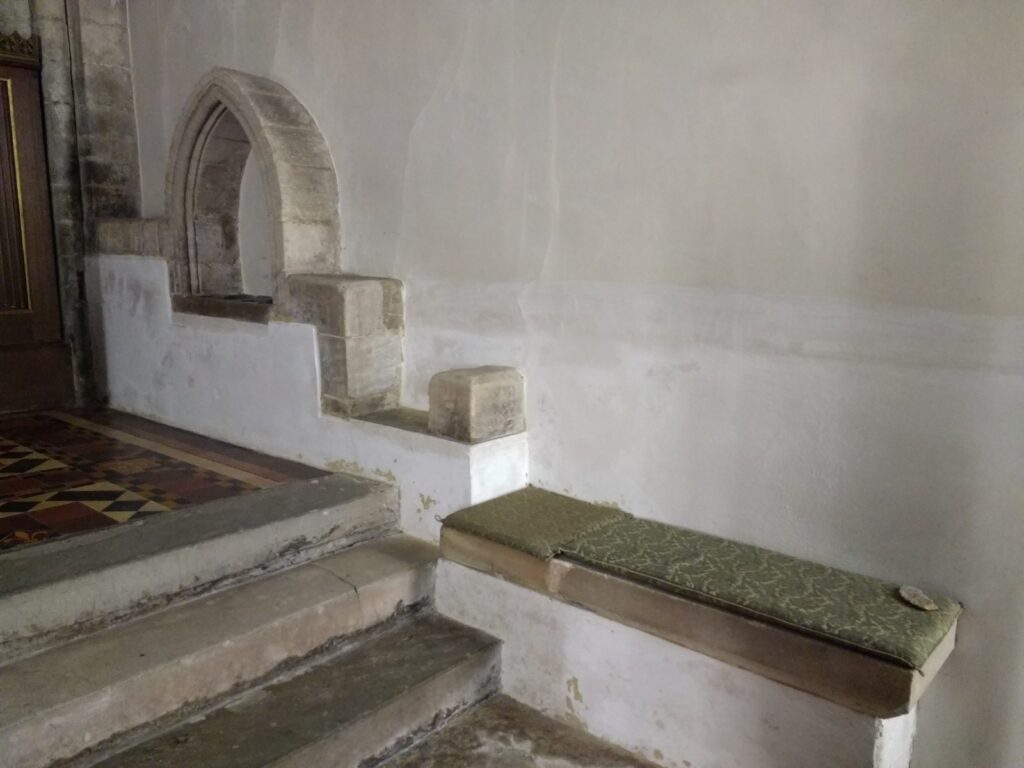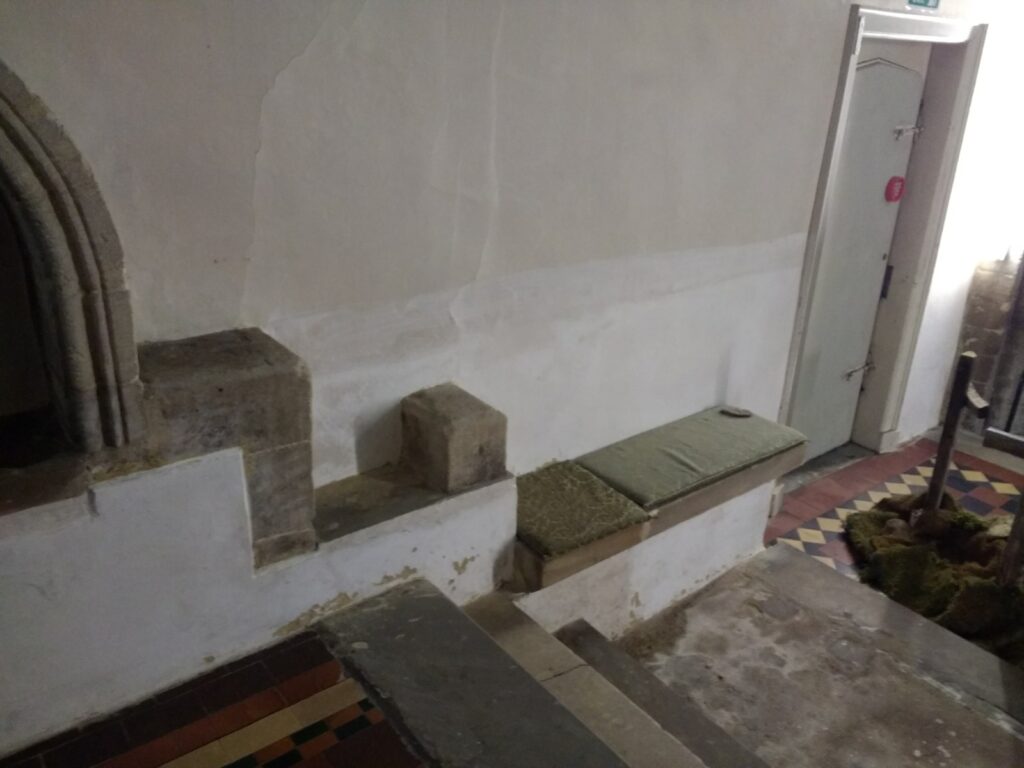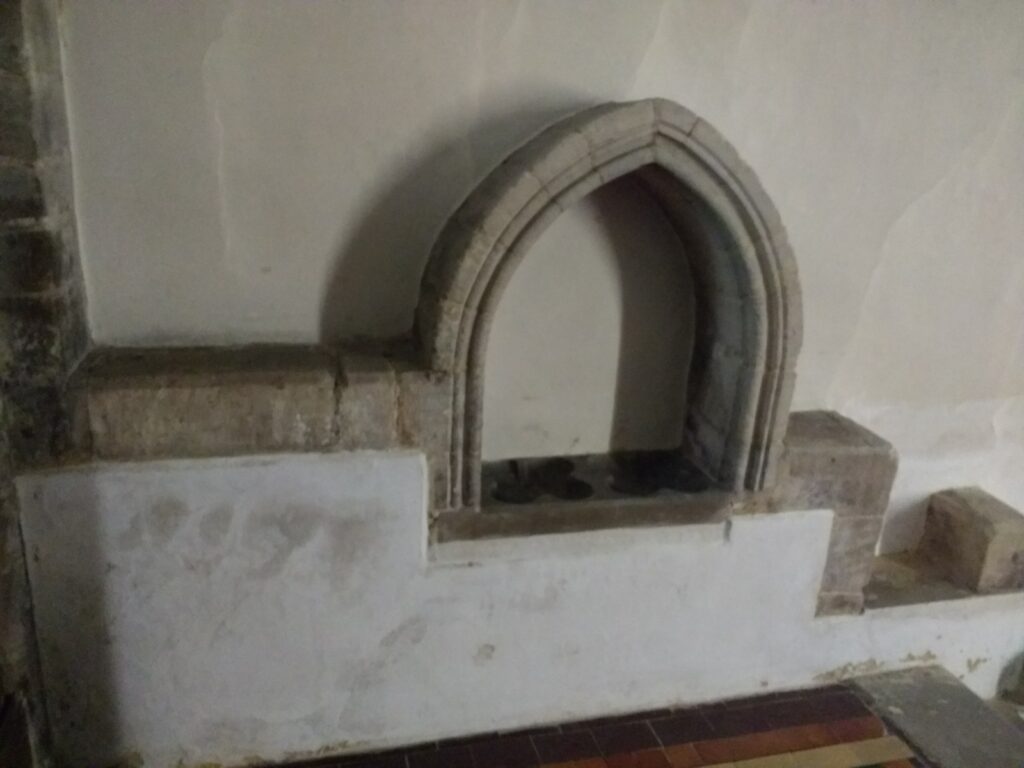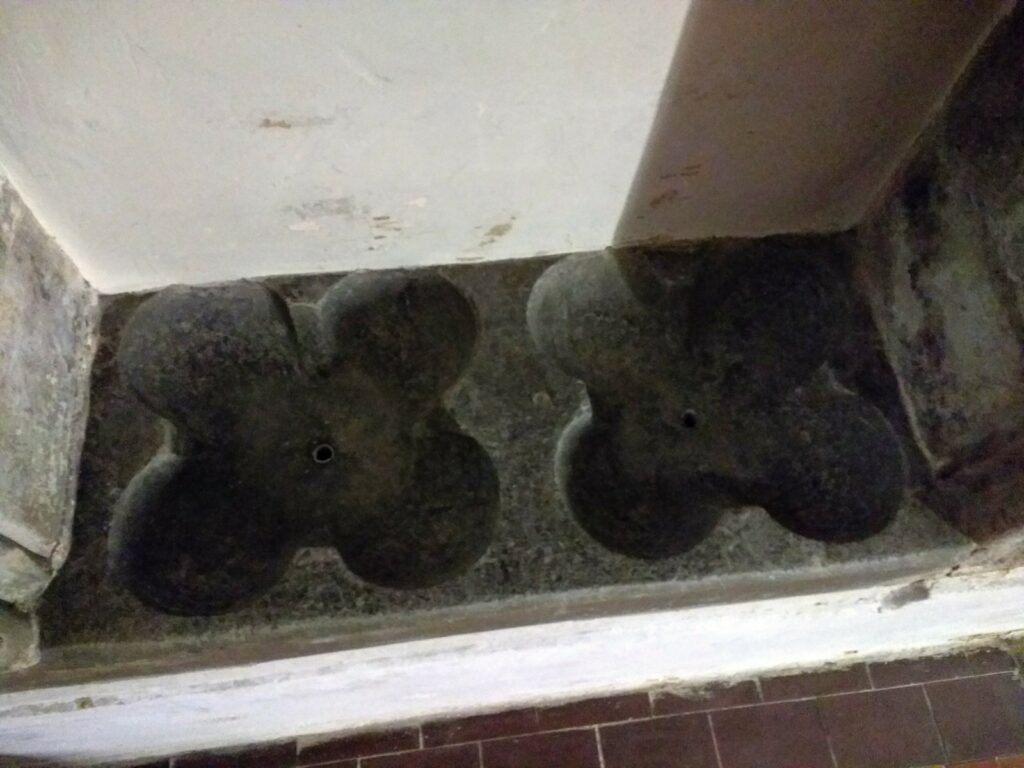Sedilla and Piscina
When the ‘hospital’ was converted into a church only a few alterations were necessary. As the former ‘chapel’ was too cramped one or two of the Eastern Bays of the nave were fenced off to make a more worthy chancel. A sedillia of three arches and a double piscina were added on the south side of the chapel which now became a projecting Eastern Bay to the chancel.
Sedilla
In church architecture, sedilia (plural of Latin sedīle, “seat”) are seats, usually made of stone, found on the liturgical south side of an altar, often in the chancel, for use during Mass for the officiating priest and his assistants, the deacon and sub-deacon. The seat is often set back into the main wall of the church itself. The custom of recessing them in the thickness of the wall began about the end of the 12th century; some early examples consist only of stone benches,
Piscina
A piscina is a shallow basin placed near the altar of a church, or else in the vestry or sacristy, used for washing the communion vessels. The sacrarium is the drain itself. Anglicans usually refer to the basin, calling it a piscina. For Roman Catholics sacrarium is “special sink used for the reverent disposal of sacred substances. This sink has a cover, a basin, and a special pipe and drain that empty directly into the earth, rather than into the sewer system




